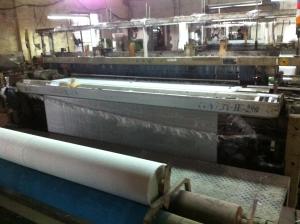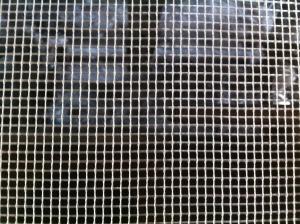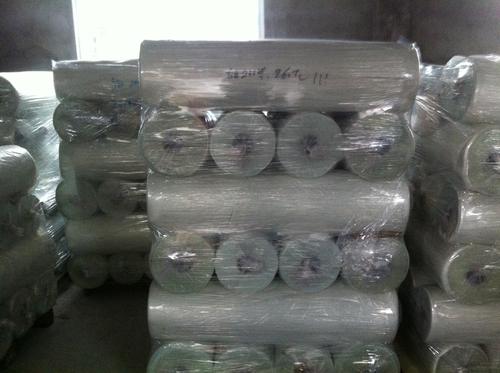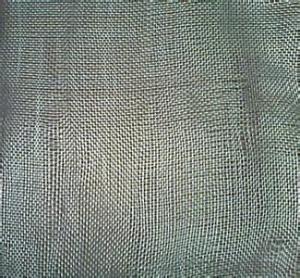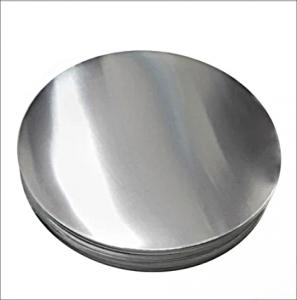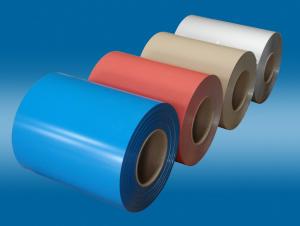Fiberglass Fabrics Grinding Wheel Cloth
- Loading Port:
- Shanghai
- Payment Terms:
- TT OR LC
- Min Order Qty:
- -
- Supply Capability:
- 200吨 m.t./month
OKorder Service Pledge
Quality Product, Order Online Tracking, Timely Delivery
OKorder Financial Service
Credit Rating, Credit Services, Credit Purchasing
You Might Also Like
fiber glass
| Specifications of fiberglass cloth for grinding wheel | ||||||||
| style | tex | inch | (N/50mm) tensile strength | weave | ||||
| (g/㎡)weight | warp | fill | warp | fill | warp | fill | ||
| CG85-14 | 85±5% | 44×2 | 66 | 14±0.5 | 14±0.5 | ≥900 | ≥700 | Leno |
| CG125-14 | 125±5% | 66×2 | 99 | 14±0.5 | 14±0.5 | ≥1300 | ≥1300 | Leno |
| CG125-8 | 125±5% | 99×2 | 198 | 8±0.5 | 8±0.5 | ≥1000 | ≥1000 | Leno |
| CG130-7×6 | 130±5% | 132×2 | 264 | 7±0.5 | 6±0.5 | ≥1200 | ≥1100 | Leno |
| CG160-5 | 160±5% | 198×2 | 396 | 5±0.5 | 5±0.5 | ≥1300 | ≥1300 | Leno |
| CG190-6 | 190±5% | 198×2 | 396 | 6±0.5 | 6±0.5 | ≥1500 | ≥1500 | Leno |
| CG235-8×6 | 235±5% | 198×2 | 495 | 8±0.5 | 66±0.5 | ≥2100 | ≥1900 | Leno |
| CG260-5 | 260±5% | 330×2 | 660 | 5±0.5 | 5±0.5 | ≥2200 | ≥2200 | Leno |
| CG320-5×4 | 320±5% | 330×2 | 1200 | 5±0.5 | 4±0.5 | ≥2600 | ≥2600 | Leno |
| CG380-5×4 | 380±5% | 528×2 | 1200 | 5±0.5 | 4±0.5 | ≥3200 | ≥2600 | Leno |
| CP145-14 | 145±5% | 132 | 132 | 14±0.5 | 14±0.5 | ≥1500 | ≥1500 | Plain |
| CP220-8 | 220±5% | 396 | 396 | 8±0.5 | 8±0.5 | ≥2200 | ≥1800 | Plain |
| CP260-8 | 260±5% | 396 | 396 | 8±0.5 | 8±0.5 | ≥2200 | ≥2200 | Plain |
| CP330-8 | 330±5% | 528 | 528 | 8±0.5 | 8±0.5 | ≥2900 | ≥2900 | Plain |
| CP420-8 | 420±5% | 660 | 660 | 8±0.5 | 8±0.5 | ≥3500 | ≥3500 | Plain |
| CP250-9 | 250±5% | 352 | 352 | 9±0.5 | 9±0.5 | ≥2000 | ≥2000 | Plain |
| CP275-9 | 275±5% | 396 | 396 | 9±0.5 | 9±0.5 | ≥2300 | ≥2300 | Plain |
| CP300-9 | 300±5% | 440 | 396 | 9±0.5 | 9±0.5 | ≥2800 | ≥2600 | Plain |
| CP260-11 | 260±5% | 297 | 297 | 11±0.5 | 11±0.5 | ≥2200 | ≥2200 | Plain |
| CP330-11 | 330±5% | 396 | 396 | 11±0.5 | 11±0.5 | ≥2900 | ≥2900 | Plain |
| CP180-18 | 180±5% | 132 | 132 | 18±0.5 | 18±0.5 | ≥1900 | ≥1900 | Plain |
- Q:What are the different types of fiberglass fabrics?
- Various types of fiberglass fabrics are available, each possessing its own distinctive characteristics and applications. Some commonly used types include: 1. E-Glass Fabric: This particular fiberglass fabric is widely utilized due to its exceptional electrical insulation properties and high tensile strength. It finds application in boat construction, automotive components, and aerospace parts. 2. S-Glass Fabric: S-glass fabric is a superior alternative to E-glass, offering higher tensile strength and better impact resistance. It is suitable for applications demanding superior strength, such as military equipment and high-performance sports gear. 3. C-Glass Fabric: C-glass fabric is resistant to chemical corrosion, making it ideal for applications where exposure to chemicals is a concern. It is commonly employed in chemical plants, wastewater treatment facilities, and other industrial settings. 4. A-Glass Fabric: A-glass fabric is an alkali-resistant type of fiberglass fabric extensively used in the construction industry to reinforce cement and concrete structures, including bridges and buildings. 5. Roving Fabric: Roving fabric consists of untwisted fiberglass strands and is typically utilized in applications requiring high strength and dimensional stability, like wind turbine blades, pipes, and pressure vessels. 6. Chopped Strand Mat (CSM): CSM is a fiberglass fabric composed of randomly oriented chopped strands held together with a binder. It is commonly employed in applications requiring a smooth and uniform surface finish, such as boat hulls and automotive parts. 7. Woven Roving: Woven roving is a heavy-duty fiberglass fabric characterized by closely woven strands. It is renowned for its high strength and stiffness, making it suitable for applications necessitating structural reinforcement, such as boat hulls, wind turbine blades, and automotive body panels. Ultimately, the selection of fiberglass fabric depends on the specific requirements of the application, encompassing strength, electrical insulation properties, chemical resistance, and surface finish.
- Q:How does fiberglass fabric perform in terms of dimensional stability?
- With its exceptional dimensional stability, fiberglass fabric proves to be highly reliable and well-suited for a wide array of uses. Thanks to the unique composition of its woven glass fibers, it possesses an impressive ability to resist changes in shape or size, even when subjected to extreme temperature fluctuations or mechanical stress. This stability ensures that fiberglass fabric maintains its original dimensions and shape over time, enabling it to consistently meet the required specifications and performance criteria. Moreover, the fabric's dimensional stability renders it ideal for applications in industries such as aerospace, automotive, and construction, where precise measurements and accuracy are essential. Overall, the outstanding dimensional stability of fiberglass fabric stands out as one of its key attributes, contributing to its extensive use and popularity across various sectors.
- Q:What are the different fiberglass fabric finishes for mold resistance?
- There exists a range of finishes for fiberglass fabric that effectively resist the growth of mold. These finishes are specially formulated to prevent mold and mildew from proliferating on the fabric's surface. Some commonly utilized finishes include: 1. Anti-microbial finish: This finish contains substances that hinder the development of microorganisms, encompassing mold and mildew. It forms a protective barrier on the fabric, deterring the attachment and growth of mold spores. 2. Fungicide finish: By incorporating fungicidal agents, this finish actively eliminates existing mold and mildew while also preventing their growth. It eradicates any mold spores present on the fabric. 3. Biocide finish: Comparable to the fungicide finish, this finish employs biocidal agents that effectively combat a wider range of microorganisms, including mold. It provides enduring protection against mold growth. 4. Moisture-wicking finish: Given that mold thrives in damp environments, a moisture-wicking finish is vital in preventing its growth. This finish facilitates the rapid evaporation of moisture from the fabric, reducing the conditions necessary for mold development. 5. Water-resistant finish: By repelling water and impeding its infiltration into the fabric fibers, a water-resistant finish diminishes the fabric's susceptibility to moisture absorption. This, in turn, minimizes the conditions that foster mold growth. 6. UV-resistant finish: Particularly in outdoor applications, ultraviolet (UV) radiation can contribute to mold growth. A UV-resistant finish safeguards the fabric against the detrimental effects of UV rays, thereby reducing the risk of mold formation. It is worth noting that different manufacturers of fiberglass fabric may employ their own exclusive finishes or combinations thereof to achieve mold resistance. Thus, it is advisable to consult the fabric supplier or manufacturer in order to ascertain the specific finishes available and their suitability for a given application.
- Q:What are the differences in the quality and performance of domestic glass fiber cloth and imported fiberglass fabric?
- Domestic glass fiber: it is made up of two layers of non-woven fabric and three layers of glass fiber. The layer is not clear and the filter layer is thick. It is not easy to break the water in the oil. The precision is generally 1 - 100 microns
- Q:How do fiberglass fabrics perform in terms of breathability for human comfort?
- For human comfort, fiberglass fabrics typically do not perform well in terms of breathability. This is due to their dense and tightly woven structure, which restricts the circulation of air. Consequently, efficient ventilation and airflow are not possible, causing discomfort and increased moisture accumulation on the skin. Moreover, fiberglass fabrics are commonly utilized in situations where thermal insulation is necessary, such as insulation materials or protective clothing. The insulation properties of fiberglass fabrics can confine heat and moisture, further diminishing breathability and potentially causing discomfort to the wearer. It is worth mentioning that there are alternative fabric choices available that offer superior breathability for human comfort. Natural fibers such as cotton, linen, and bamboo, as well as synthetic materials like polyester and nylon, are often favored for their ability to allow air to circulate more freely, thus keeping the body cool and dry. Therefore, if breathability and comfort are of utmost importance, it is advisable to consider fabrics other than fiberglass.
- Q:Can fiberglass fabrics be used for insulation in HVAC ductwork?
- Yes, fiberglass fabrics can be used for insulation in HVAC ductwork. Fiberglass is a commonly used material for thermal insulation due to its excellent heat resistance and insulation properties. It can help prevent heat loss or gain in ductwork, improving energy efficiency and maintaining desired temperatures. Additionally, fiberglass fabrics are lightweight, easy to install, and offer good acoustic insulation.
- Q:Are fiberglass fabrics suitable for use in marine environments?
- Yes, fiberglass fabrics are suitable for use in marine environments. They are highly resistant to water, chemicals, and UV rays, making them ideal for boat building, sail making, and other applications in marine settings. Additionally, fiberglass fabrics offer excellent strength-to-weight ratio, durability, and dimensional stability, making them a popular choice in the marine industry.
- Q:Can fiberglass fabric be used for insulation in steam systems?
- Yes, fiberglass fabric can be used for insulation in steam systems. Fiberglass fabric is a popular choice for insulation in steam systems due to its excellent thermal insulation properties and resistance to high temperatures. It can effectively trap the heat produced by steam, preventing heat loss and improving energy efficiency in the system. Additionally, fiberglass fabric is lightweight, flexible, and easy to install, making it a convenient option for insulating steam pipes and equipment. Its non-combustible nature also ensures safety in steam systems. Overall, fiberglass fabric is a reliable and effective insulation material for steam systems.
- Q:Can fiberglass fabrics be recycled or repurposed?
- Yes, fiberglass fabrics can be recycled or repurposed. Fiberglass is a versatile material that can be broken down and reused in various ways. One common method of recycling fiberglass is to grind it into a powder and then use it as a filler material in composite products such as concrete, insulation, or even new fiberglass products. This process reduces waste and allows for the reuse of fiberglass materials. Additionally, fiberglass fabrics can also be repurposed by cutting them into smaller pieces and using them for insulation or as reinforcement in other materials. These repurposed fabrics can be used for various applications such as automotive parts, boat repairs, or even art and craft projects. Overall, the recycling and repurposing of fiberglass fabrics help to minimize waste and make better use of this durable material.
- Q:Can fiberglass fabric be used for heat-resistant gaskets?
- Yes, fiberglass fabric can be used for heat-resistant gaskets. It has excellent thermal insulation properties and can withstand high temperatures, making it suitable for applications where heat resistance is required.
1. Manufacturer Overview |
|
|---|---|
| Location | |
| Year Established | |
| Annual Output Value | |
| Main Markets | |
| Company Certifications | |
2. Manufacturer Certificates |
|
|---|---|
| a) Certification Name | |
| Range | |
| Reference | |
| Validity Period | |
3. Manufacturer Capability |
|
|---|---|
| a)Trade Capacity | |
| Nearest Port | |
| Export Percentage | |
| No.of Employees in Trade Department | |
| Language Spoken: | |
| b)Factory Information | |
| Factory Size: | |
| No. of Production Lines | |
| Contract Manufacturing | |
| Product Price Range | |
Send your message to us
Fiberglass Fabrics Grinding Wheel Cloth
- Loading Port:
- Shanghai
- Payment Terms:
- TT OR LC
- Min Order Qty:
- -
- Supply Capability:
- 200吨 m.t./month
Offcanvas right
...
OKorder Service Pledge
Quality Product, Order Online Tracking, Timely Delivery
OKorder Financial Service
Credit Rating, Credit Services, Credit Purchasing
Similar products
New products
Hot products
Hot Searches
Related keywords

